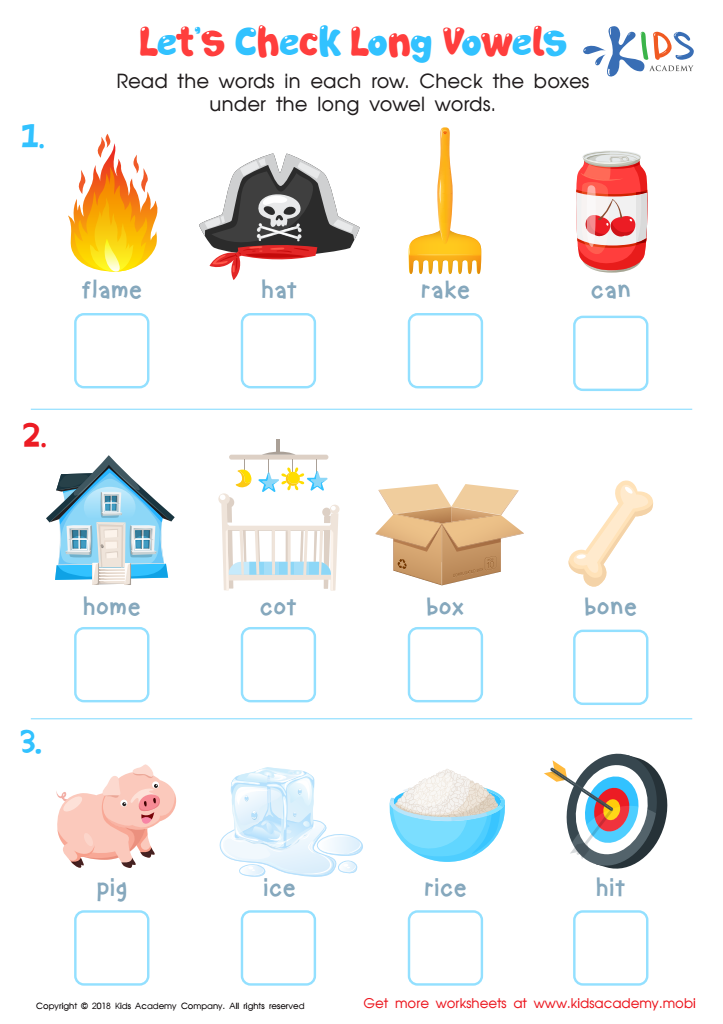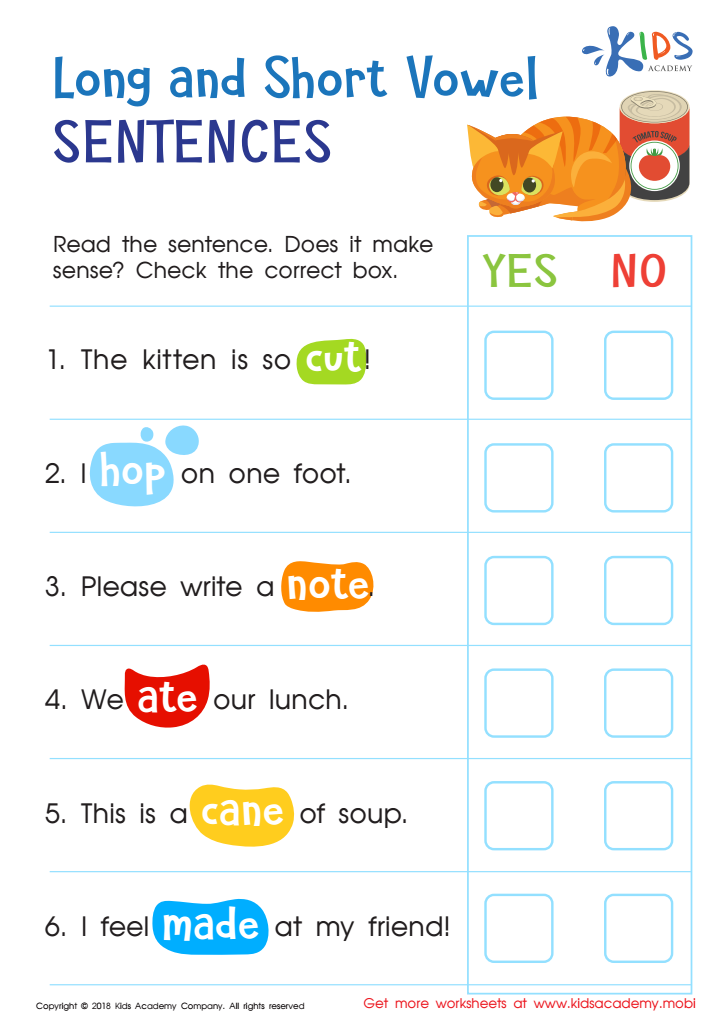Normal Phonics worksheets activities for 7-Year-Olds
2 filtered results
-
From - To


Let's Check Long Vowels: Assessment Worksheet


Long and Short Vowel Sentences: Assessment Worksheet
Normal Phonics worksheets activities are an invaluable resource for educators and parents looking to enhance a child's reading and writing abilities. These structured activities are specifically designed to teach children the relationship between letters and sounds, which is a foundational skill in literacy. Let's delve into why Normal Phonics worksheets activities are so beneficial.
Firstly, Normal Phonics worksheets activities provide systematic instruction. This means they introduce sounds and letters in a carefully planned sequence, allowing children to build on their knowledge gradually. This systematic approach is crucial, as it ensures that learners can progress from understanding simple sounds to decoding more complex words and sentences.
Moreover, these activities are incredibly versatile. They can be tailored to suit the learning pace of each child, making them an excellent tool for differentiated instruction. Whether a child is a fast learner or needs a bit more time to grasp concepts, Normal Phonics worksheets can be adjusted to meet their individual needs, ensuring no one is left behind.
Engagement is another significant benefit of Normal Phonics worksheets activities. They often include a variety of tasks such as matching exercises, fill-in-the-blanks, and word puzzles, which make learning fun and interactive. This variety not only keeps children interested but also helps cater to different learning styles. Whether a child learns best through visual aids, hands-on activities, or repetition, Phonics worksheets provide an array of options to engage all learners.
Lastly, these worksheets offer a tangible way to assess progress. Teachers and parents can easily track a child’s advancement through the completion of these activities, allowing for timely intervention if certain areas need more focus. This ongoing assessment is vital for ensuring that children are on the right path towards literacy.
In conclusion, Normal Phonics worksheets activities are a potent tool in the literacy development arsenal. They offer systematic instruction, versatility, engagement, and a clear means to assess progress, making them an essential component of effective reading and writing education.

 Assign to My Students
Assign to My Students





















